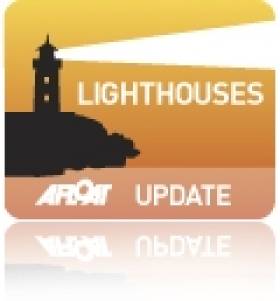Displaying items by tag: Virtual Aid to Navigation
Commissioners of Irish Lights Chart First Permanent Virtual Aid to Navigation in Irish Waters
#lighthouses – The Commissioners of Irish Lights (CIL) has the first permanent Virtual Aid to Navigation charted in Irish Waters on the 5th June 2014. The port hand Virtual Aid to Navigation was established at the entrance to Belfast Lough on the North East Coast of Ireland. This was in response to a newly reported shoal depth of 8.0 metres at the Rigg Bank.
CIL explored various options to ensure the shoal depth was addressed correctly. One option was to place a buoy to mark the pinnacle depth. However, after completing a Risk Assessment and extensive Automatic Identification System (AIS) analysis, it was clear the buoy would introduce a new danger in the relatively deep water. As a result, the port hand Virtual Aid to Navigation was chosen and deployed approximately half a nautical mile east of the position of the new pinnacle depth on the 20th November 2013.
Deirdre Lane, Navigation Policy Officer in CIL commented "It was found that deep draft vessels which need to have the pinnacle depth highlighted the most, are those that have the capability for a Virtual Aid to Navigation to be displayed on their on-board systems. In this unique set of circumstances, it was clear the Virtual Aid to Navigation was the best option".
One of the functionalities of AIS is that a land based AIS station can be used to transmit the position of an AIS Aid to Navigation that does not physically exist in the water. It is represented as a digital symbol on the ships Radar, Electronic Display and Information System (ECDIS) or Integrated Navigation System.
In order to bring the Virtual Aid to Navigation to the Mariners attention, it was officially mapped on navigational charts by the UKHO at CIL's request on 5th June 2014. As a result, CIL is responsible for the first permanent charted Virtual AIS Aid to Navigation in Irish waters.























